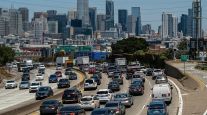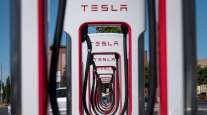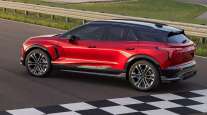Bloomberg News
EV Tax Credit Rules Leave Carmakers in the Dark — Again
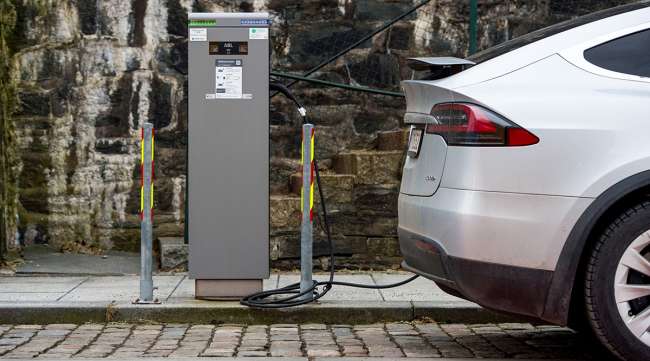
[Stay on top of transportation news: Get TTNews in your inbox.]
Automakers have been waiting for the U.S. Treasury Department to help them figure out which of their cars are eligible for lucrative electric-vehicle tax credits. The Treasury’s response: Keep waiting.
The department released new rules on March 31 codifying many, but not all, of the qualifications needed for consumers to claim as much as $7,500 per vehicle. These include some provisions on sourcing critical minerals for batteries and other components that are still incomplete.
That leaves automakers and dealers with a suite of cars that are only eligible for purchase incentives until the new rules take effect April 18, and a looming sense that many more models will be disqualified. Moreover, it’s up to the carmakers to tell the Treasury — under penalty of perjury — which of their vehicles are eligible.
“We’ve already got a confused market,” said Mike Sullivan, who owns dealerships selling 15 different brands in the Los Angeles area including Toyota, Hyundai, Subaru and Volkswagen. “You’ve got enough discomfort with interest rates, gas prices, the ebb and flow of cars available. So when people go to look and talk, they’re getting mixed messages.”
Twenty-one vehicle models qualify for the full credits according to the IRS’ most recent guidelines, though the new rules will disqualify several and downgrade others to partial credits after April 18. That number is also far below the 72 that had initially qualified before the Inflation Reduction Act became law.
“March 2023 was as good as it gets,” John Bozzella, president of the Alliance for Automotive Innovation, said in an email.
Some automakers lost no time warning customers to act now or risk losing access to tax credits.
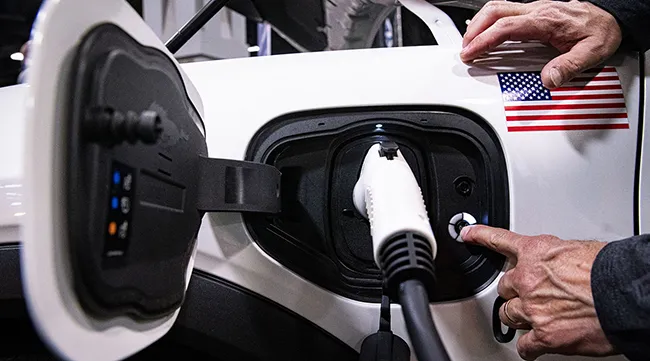
An exhibitor demonstrates plugging in a charging port for a Ford Motor Co. Mustang during the Washington Auto Show in Washington, D.C., on Jan. 21, 2022. (Al Drago/Bloomberg News)
Stellantis NV called it “great news” for customers interested in buying electrified versions of its Chrysler Pacifica or Jeep Grand Cherokee and Wrangler models — as long as sales are made before April 17. The automaker wasn’t yet sure if those models will qualify after the new rules take effect.
“We are carefully reviewing them and will communicate any changes in credit availability to our dealers and customers,” Stellantis said in an emailed statement.

Kayne Grau, CEO of Uptake, discusses ways that fleets can use data to prevent expensive truck repairs. Hear the program above and at RoadSigns.TTNews.com.
Ford Motor Co. said after the rules were released that it would help buyers figure out whether they’re eligible for incentives. “We plan to share more information with our customers soon,” Jim Farley, the company’s CEO, said in a statement.
The new rules are expected to at least partially benefit automakers such as Tesla Inc. and General Motors Co., which have made big investments in domestic battery production, even as they rely on minerals mined in countries likely to be disqualified by future rules.
Other companies like Toyota Motor Corp., which has been criticized by environmentalists for focusing on hybrids instead of fully electric vehicles, could also benefit from having more time to match competitors who would otherwise qualify for full credits in the short term.
But less generous tax credits will do little to make EVs more affordable. That may push automakers to cut prices or fund incentives from their own pockets in order to boost sales volumes, said Manish Dua, a consultant at Benchmark Minerals in New Delhi who has been studying the tax credit rules.
Tesla may be a beneficiary of partial credits for its mass-market, sub-$50,000 Model 3 since even half of the $7,500 subsidy would be a larger discount on its sticker price.
The EV market leader “is currently building out its domestic cell manufacturing capabilities and is reported to be searching for another partnership for U.S. production,” Ben Kallo, an analyst at Baird Equity Research, wrote in a research note published March 31.
— With assistance from Ari Natter.
Want more news? Listen to today's daily briefing below or go here for more info:


